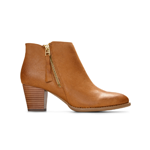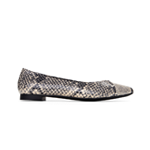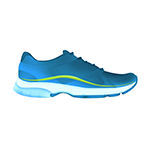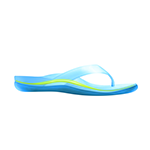Choosing the Best Shoes for Ingrown Toenails

The right pair of shoes can be an absolute game changer. A proper fit with adequate support and comfortable construction can significantly reduce your risk of developing common foot and ankle ailments. This can range from relatively minor conditions like blisters (read more about how to prevent blisters when running) and corns to more serious conditions, like having to find correction shoes for bunions or plantar fasciitis.
When you have a painful ingrown toenail, the right shoes are even more important.
Ingrown toenails affect at least 12 million people in the United States alone1 and can stem from ill-fitting shoes, so we consider this a much-needed act of public service. Here’s how to choose the best shoes for ingrown toenails.
It All Comes Down to the Fit
At the end of the day, the most important rule for selecting ingrown toenail shoes is that they fit properly. This may seem simple, but “proper fit” means more than selecting a shoe in your size.
Shoe size is important and can be an instrumental guide in helping you pick the best shoes for ingrown toenails, but there are other aspects you should consider as well:
- Width – Shoe size mostly refers to the length of the shoe, so be sure that you’re taking the width of your foot into consideration when you’re shopping for ingrown toenail shoes. Small shoes will cramp your toes and encourage ingrowth, unless you have narrow feet, then you’ll need to find shoes tailored for narrow feet. If you need extra room, look for shoes marked 2E—considered wide for men, extra wide for women—or 4E—extra wide for men. Check out the men’s section if you’re used to wearing women’s shoes since your companion size will likely be designed for a wider foot.
- Shape – Everyone’s feet are shaped differently, and so are different shoe styles. For ingrown nails, look for shoes that have wider, rounded shapes, rather than slim, pointed toes. If you can, have a professional measure your foot and recommend styles that match your unique foot shape, including the height and placement of your arch, width of your feet, and so on. While searching, it’s safe to wear some type of sandals (or slip on shoes) to prevent constricting the ingrown toenail.
- Toe box – The toe box is the area of the shoe that holds, well, your toes. When you have an ingrown toenail, it’s essential that you wear shoes that are extra roomy in this area. Your toes should be able to lie straight and flat, with room to wiggle around in all directions. This prevents unnecessary squeezing and pressure that can make ingrown toenails worse and increase foot pain. Many opt for no toe box by selecting an open-toe shoe, like sandals. If you follow in their footsteps, be sure to shop Vionic for a pair of comfortable, supportive, and stable shoes to avoid additional strain on your feet.
When you’re looking for shoes for a painful ingrown toenail, you need to think of yourself as Goldilocks in the home of the three bears. That doesn’t mean you need to start trespassing, but it does mean you have to be picky.
The best ingrown toenail shoes are neither too loose nor too tight. They’re not too wide, but they aren’t narrow, either. In other words, they fit just right.
How Do I Know If I Have An Ingrown Nail?
When you have an ingrown toenail, you’re likely to notice it right away. At first, it may present as hardness or swelling of the toenail and surrounding area, which may be painful or tender to the touch. In progressed stages, the toe may also feel hot or become infected.
If you’re noticing these symptoms but aren’t familiar with the sensation, you may be experiencing your first ingrown toenail. They’re exactly what they sound like: a toenail that has grown into the skin surrounding it, instead of outward, as it should.1 Specifically, this happens at the corner of the nail near the top of the toe. All of your toes are at risk of growing into the nailbed, but the big toe is the most frequent victim—or perpetrator, depending on how you look at it.
Why Am I Experiencing Ingrown Toenails in the First Place?
Ingrown toenails are exceedingly common. In fact, of the more than 60 million people who visit a podiatrist each year,2 more than 20% of them show up in shoes that are concealing an ingrown toenail.1
Furthermore, anyone can develop this condition. Certain groups are at slightly higher risk—for example, athletes, young people, and people with poor blood circulation or medical conditions such as diabetes. Your family history can also play a part.3
But generally speaking, ingrown toenails can also plague anyone who:
- Trims their toenails incorrectly – Oftentimes, ingrown toenails occur when a toenail has been trimmed too close to the skin. Keeping your toenails between one and two millimeters long can help prevent this from happening.4
- Tears the corner of their toenails – Whether it’s a nervous habit or part of your at-home pedicure, tearing the corners of your toenails is a bad idea. This is similar to over-trimming your nails. The corner of the toe is where the nail is most likely to grow improperly and you aren’t doing yourself any favors if you rip it too short.
- Has suffered a toe injury – If you’ve ever stubbed your toe, you know how sensitive these little piggies are. Even the smallest injuries can lead to ingrown nails.
- Wears poorly fitting shoes – If your shoes are too narrow, too short, or too tight, you risk cramping your toes. Unfortunately, that constricted environment is just the type in which ingrown toenails tend to thrive. You can find out how to choose the best running shoes for your feet to prevent foot issues in the future.3
Sometimes, ingrown toenails are an unfortunate result of genetics. The shape of your feet, toes, and toenails can all affect the likelihood of your toenails growing inward.
Is There Treatment For Ingrown Toenails?
Although they can be uncomfortable and a bit unsightly, ingrown toenails are rarely serious. In most cases, you can treat and care for the affected toe at home. With proper care, you can remedy the toenail within a few days to a week.
Aside from selecting the right footwear—seriously, we can’t emphasize the value of a well-fitting shoe enough—here are some of the best at-home remedies for treating ingrown toenails:
- Saltwater soaks – Submerging the affected toe in Epsom salt and warm water is an effective way to clean an ingrown toenail and curb its progression. Medical professionals recommend soaking the toe twice a day for the best results. When you aren’t soaking, make sure you keep the area dry and clean.
- Antibiotic creams – Creams that purge bacteria from the toenail can reduce the risk of infection and promote a speedy recovery. After applying, be sure to dress the affected toe in a clean bandage to keep infection-causing germs away.
- Ingrown Toenail Treatment – In rare instances, you may need to see a medical provider about an ingrown toenail. If your affected toenail becomes infected, at-home solutions may not be enough. You could need prescription medications or even a medical procedure to extract the part of the nail that’s grown into your toe. However, it rarely comes to this.

Can You Prevent Ingrown Toenails?
Ingrown toenails are among the most common kind of foot problems, most likely because most people don’t know how to prevent them. However, ingrown toenails can be prevented. In most cases, it all comes down to avoiding the common dangers that can trigger ingrowth in the first place.
To reduce your risk of future ingrown toenails, be sure to:
- Cut them properly – When you trim your toenails, take extra care not to trim them too short or round the edges too much. It’s also helpful to soak them in warm water for a few minutes before cutting. To reduce the risk of infection, be sure to only use sanitized toenail clippers.
- Avoid tearing or ripping them – Although it can be satisfying to some, try not to tear at hangnails or frayed skin around your toenail, especially along the nail corner. Clipping or filing is a much safer option.
- Go barefoot – Giving your toes time to breathe can help keep ingrown toenails at bay. This is especially true if you maintain an exceptionally active lifestyle and frequently have your toes squished inside a pair of running shoes. You might also opt for a pair of open-toed sandals every now and then.
- Find that just-right fit – Every aspect of your footwear can contribute to—or protect you from—ingrown toenails. The right shoes are important, but so are properly fitting socks. You should also keep your feet dry and clean, especially before slipping them into said socks and shoes.
Protect Your Feet From Ingrown Toenails With Vionic
When you purchase footwear from Vionic, you aren’t just buying shoes. You’re treating your feet to a one-of-a-kind experience that can improve your stride and enhance the wellness of your feet. And they deserve it, no matter which direction your toenails decide to grow.
With dozens of styles for men and women and scientifically backed features like arch support, stable construction, and cushioning soles, you’ll enjoy all-day comfort, support, and stability. If you’re struggling with ingrown toenails—or just want to treat yourself to more comfortable footwear—Vionic makes all the difference. Shop now to feel it for yourself.
Sources:
- “Ingrown Toenails: Signs, Causes, Diagnosis, Treatments, Prevention.” Cleveland Clinic, 19 October, 2020. https://my.clevelandclinic.org/health/diseases/17664-ingrown-toenails
- “Foot Facts.” Milford Podiatry. https://www.milfordpodiatry.com/foot-facts#
- “How to Prevent and Treat Ingrown Toenails.”. Cleveland Clinic, 26 September, 2019. https://health.clevelandclinic.org/how-you-can-prevent-and-treat-painful-ingrown-toenails/
- “How to Cut Toenails: Step-by-Step Instructions.”. Healthline, 30 May, 2018. https://www.healthline.com/health/how-to-cut-toenails#










